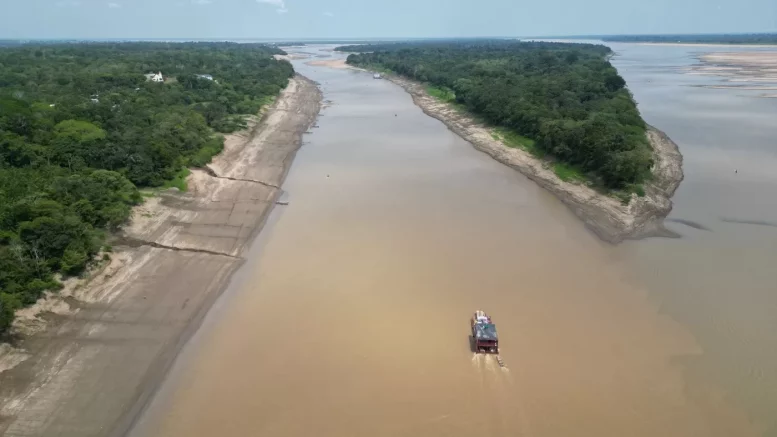“As the planet heats up more and more, it is very likely that other droughts as severe as this one will come, and with greater frequency…”
Ane Alencar is the science director of the Amazon Environmental Research Institute – IPAM, with a degree in geography from the Federal University of Pará, M.Sc from Boston University and a Ph.D. from the University of Florida.
IPAM is a scientific, non-governmental, non-partisan and non-profit organization that works for the sustainable development of the Amazon.

Ane Alencar, science director of IPAM
AgriBrasilis – Is the drought in the Amazon due to human activities?
Ane Alencar – The extreme drought of 2023 that hit the Amazon was caused by the El Niño phenomenon and driven by climate change stemming from global warming. Human action has greatly impacted global warming, which affects the intensity and frequency of climatic phenomena, such as El Niño.
I have been studying wildfires for almost 30 years and one of the things that has really caught my attention is that with the forest landscape increasingly fragmented by deforestation, and with the planet warmer, the forest is becoming more susceptible to fire, more “flammable” than before. However, it is worth remembering: the forest may be “flammable,” but it will only catch fire if someone puts it on.
AgriBrasilis – Can this drought be considered the “first of many”? Why?
Ane Alencar – This was not the first major drought experienced in the Amazon, but it was one of the worst droughts documented in the biome. In this way, it affected an important part of the region’s population, since the impact of the drought was concentrated in the channel of the Solimões and Amazon rivers, where there are many important cities and many riverside communities. As the planet heats up more and more, it is very likely that other droughts as severe as this one will come, and with greater frequency.
AgriBrasilis – Is the current drought different from others that have occurred in the past?
Ane Alencar – The 2023 drought was exacerbated by the high temperatures experienced on the planet last year. We had the drought of 2005 and 2010, but none of those occurred along with one of the warmest years in the recent history of the planet.
AgriBrasilis – Is the Amazon the biome most affected by climate change?
Ane Alencar – All the planet is affected by climate change, and the Amazon is no exception to this rule. A warmer planet, with more frequent and intense extreme events, such as intense rains, which generate floods, or severe droughts, which cause the death of fauna and flora and make the landscape more flammable, are some of the effects of climate change.
AgriBrasilis – Rivers are disappearing in the region. Is this damage reversible?
Ane Alencar – Drought greatly affects rivers. It was possible to clearly notice this in 2023. Probably, when it starts to rain, these rivers will recover their size, but we don’t know the medium and long-term effect on the community of fish and aquatic animals if these droughts become too frequent, for example. Probably, the stocks will not have time to recover and only those species that manage to adapt will remain.
AgriBrasilis – Why is there an increase in wildfires over the years?
Ane Alencar – Wildfires are a response to weather conditions, but also to human actions. If we have a very strong drought, but few people deforesting and burning, we will have fewer fires than we would have if we had a very strong drought and many people deforesting and burning. So, wildfires increase a lot when these two conditions are favorable.
AgriBrasilis – What are “fire scars” and why are they important?
Ane Alencar – We call fire scars the mark on satellite images left by fires or forest fires, which allows us to delimit and quantify the burned area. These burned area data are important to determine the trend of increase or decrease in fire and to support decision-making, including when fighting fires.
Often, when a forest had a recent fire, the likelihood of a fire spreading there increases, so it’s good to know which areas have already been burned and when, to help protect them. Mapping fire scars helps to provide this information.
READ MORE:

